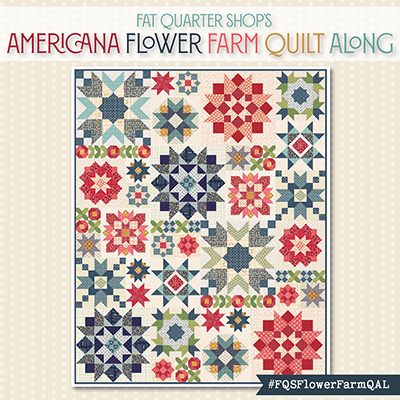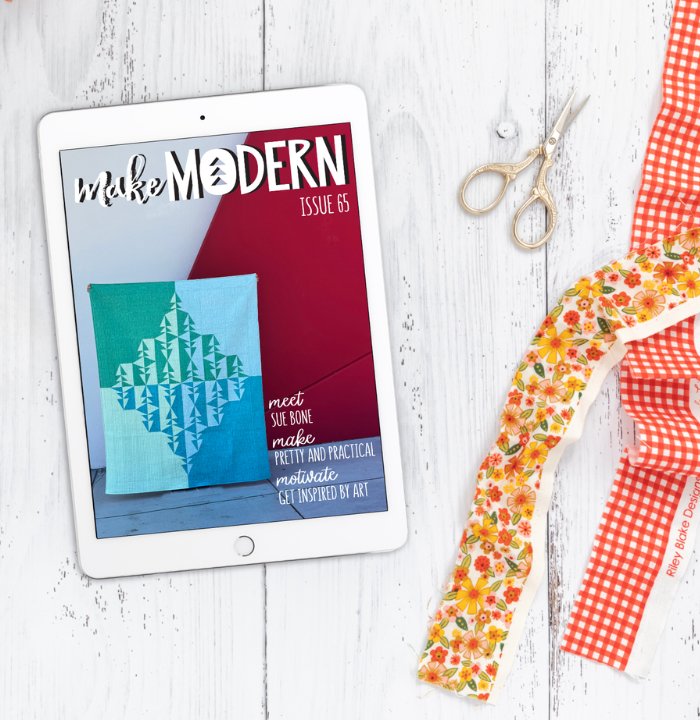
Drift Quilt Along – Week 1:
Picking out Fabric For Your Quilt
Welcome to the Drift Quilt Along! I’m so excited you’re here. For this quilt along, we’ll be focusing on the throw size quilt, but if you’d like to make a larger version, go for it! Most of the tips and extras I’ll share throughout the quilt along will be geared toward the throw size, just to keep things consistent. This week, we will be picking out fabric for your quilt.
This week’s topic is fabric. This is my favorite part of making a quilt. Some say collecting fabric is a hobby all on its own, and I couldn’t agree more. I have a special spot in my sewing room for the fabrics I hoard (yes, hoard!),
It might just hurt my heart to not have them anymore. So much so that I have found myself trying to replace them when I use them.
I love learning about designers—their color palettes, the way they illustrate florals, their edge styles (rough or smooth). It all gets my brain buzzing. And don’t even get me started on petting the fabric. You know what I mean.
If you haven’t signed up yet, there is still time. Fill out the form on the Save the Date page to get emails for the Zoom Sew Day, and a few extras.

Fabric Requirements for the Drift Quilt
This quilt is much simpler to pick fabric for than most. This is because it only requires 5 different fabrics. Four fabrics for the birds and one background fabric. There are so many possibilities. I have a few different color variations in my pattern, and I will be sharing more with you here in this blog post.
What I’m Using for the Quilt Along
For the quilt along, I will be working with fabrics from Bee Garden by Gingiber and Thatched (stone), a basic from Robin Pickens. I really wanted to use a black background with black and white fabrics, but talked myself out of that and decided on a softer color palette. I can’t wait to see how this quilt will turn out. It may just be perfect for a nursery. Hummmmm… do I need a baby quilt for a gift??

I also have a UFO version started in Amy Butler block prints with a light grey background. That one’s on hold while we work through this quilt along—but here’s a peek of it!
A Quick Note Before You Start…
I would like to start this out with a disclaimer: Make what you love. Truly. The quilt police just don’t exist. If one knocks at your door, don’t answer it. The way we learn is by doing, so don’t be afraid to do the thing. Mix the colors. Do the wild and unthinkable. All of these creations help us grow and become.
A little about color theory
The Basics:
Color theory all starts with the color wheel. That is the simplest way to look at how colors match, what complementary colors are, and what is a blend of a color.
A wheel always starts with the primary colors: yellow, red, and blue. Pure colors that can be used to make all other colors.

You set them in a circle or a flower with 6 petals. Put your red on one petal. Skip a petal. Then add yellow. Skip a petal. Then add blue.
If you are doing this with me using paint, you can actually mix the colors together for the next step. If you mix yellow and red together, you will get orange. Fill the petal between yellow and red with orange. If you mix red and blue together, you get purple. In the space between red and blue, add purple. Now we have the petal in between blue and yellow. What do we get when we mix those two? Green. When we add that color, our color wheel is complete.

The colors that we created by mixing the primary colors together are the secondary colors: orange, green and purple. They naturally work well with primary colors because they are made from each other.
Complementary colors are directly opposite each other. They are like the sweet and spicy combo. They are nothing alike but still somehow they work. Think red and green or orange and blue.
The tint, shade, or tone of the color changes by adding a color, white or black, only changing it by making it lighter or darker.
Now how do we take this information and convert it into quilting?
When I was making my bridal shower quilt for Jessa, I discovered something interesting. You can pull a simple palette of fabrics like grey. You would think that all greys match. Right? Wrong!! I found some grey fabrics with more yellow in them and some with more blue in them. Making it colder (blue) or hotter (yellow). Now let’s say you have 12 different greys that all have a blue tone and one that has a yellow tone, that one fabric will stand out. But if you intentionally bring in all the different tones of grey—with blue, yellow, red—the whole kit and caboodle, they will all blend.

Me and my friend Sue talked about this and her answer to this question was tea staining all her fabrics before she started the project. And I love that!!
Use solids:
It can be easy to pick out primary and secondary colors, like picking them out on a card. (((color cards))) Something I have always done is go to Home Depot and look at their paint card wall. Grabbing some colors off the wall and using them as a palette.
Focus Fabric:
Another thing you can do is find a main fabric you like and pull colors from that fabric. You can use that as your border, backing, or even inside the quilt to bring it all together.
Websites that let you search by color
I love this feature. Hawthorne Fabrics was the first website where I saw this and fell in love with it. When I created my shop, I added the feature to it.

Contrast
The pattern has four different colors of birds. We will make 4 blocks of each color and lay them out in a V to mimic the flight pattern of birds migrating. I wanted one set of birds to really pop out of the design. The other three fabrics are different from each other in color but not very different in contrast. A great way to be able to see this is in grayscale. You can do this with your photo. Take a photo of your fabrics and then convert it to black and white or grayscale.
Ask Yourself:
- What fabric line are you currently obsessed with?
- Are there four prints in that line you love?
- Do you want big prints or small prints?
- Can you pull from your stash?
Don’t forget to download your coloring sheet from the Pattern Extras page! It’s a great way to test your palettes before committing. You do need to have purchased the pattern to access the Pattern Extras page. Here are some pallets I played with to give you some inspiration.
Fabric lines – Achroma, Ooh Lucky Lucky, Warp Weft, Acorn Hollow, Star Spangled, Shimmer






This Week’s Task:
Picking out fabric for your quilt and ordering your fabric! That’s all you need to do. Post a photo of it on Instagram and use the quilt along hashtag (#DriftQAL) to qualify for this week’s gift.
If you would like help picking out your fabrics, I’ve put together three kits in my shop and I’d love to help you create a custom one if you want something unique. Just send me an email at edemoo@brownbirddesigns.com.
Instagram Giveaway
Win Prizes During the Quilt Along!
I’ll be choosing winners on Instagram, so make sure your account is set to public for the duration of the Quilt Along. If your account is private, I won’t be able to see your photos—and if I can’t see them, I can’t enter you into the drawings for prizes. Once the Quilt Along wraps up, feel free to make your account private again. If you need help updating your settings, just let me know—I’d be happy to walk you through it!

How to Enter
Use the hashtag #DriftQAL when posting your progress photos. With each new step in the Quilt Along, I’ll select a winner. Here’s how it works: I gather the names of everyone who shared a photo using the hashtag that week, put them all in a bowl, and draw one out. That’s our weekly winner!
Grand Prize Details
For the grand prize, I’ll be looking at overall participation. I’ll tally points based on:
- The number of progress photos you post using #DriftQAL
- How often you comment and cheer on others in the community
The person with the highest total will win the grand prize—so get involved, stay active, and have fun supporting each other!
Want to join the Drift Quilt Along?
It’s not too late to join the quilt along. You can head over to last week’s blog post about picking out your fabrics to get caught up. Quilt Along Schedule:
JULY
1st – Fabric Pull
8th – Cutting Fabric
15th – Making blocks with F 1 AND F2
DATE CHANGE – 19th Zoom Sew Day
22nd – Making blocks with F3 AND F4
29th – Putting the top together
August
5th – Quilting the Quilt





